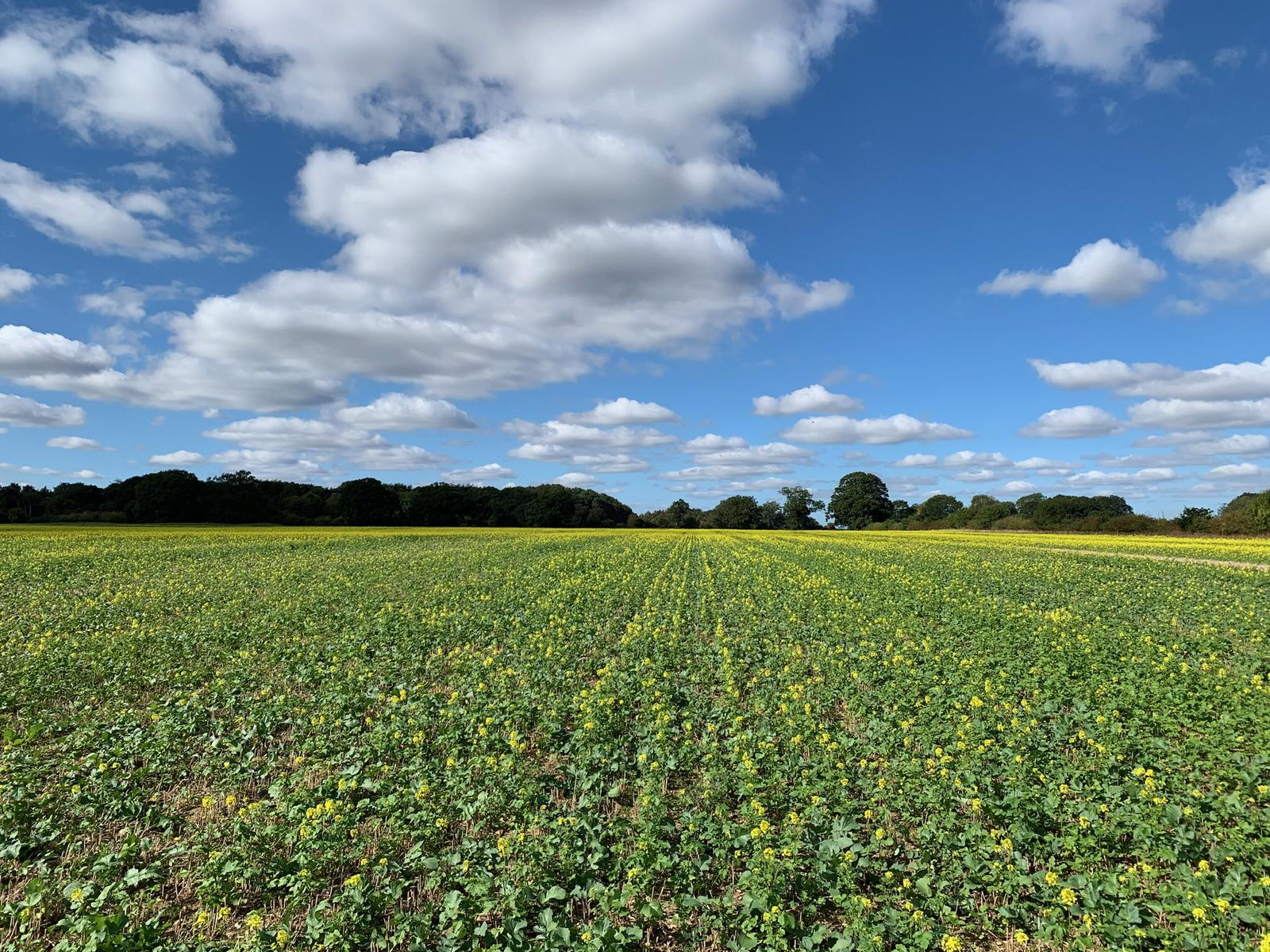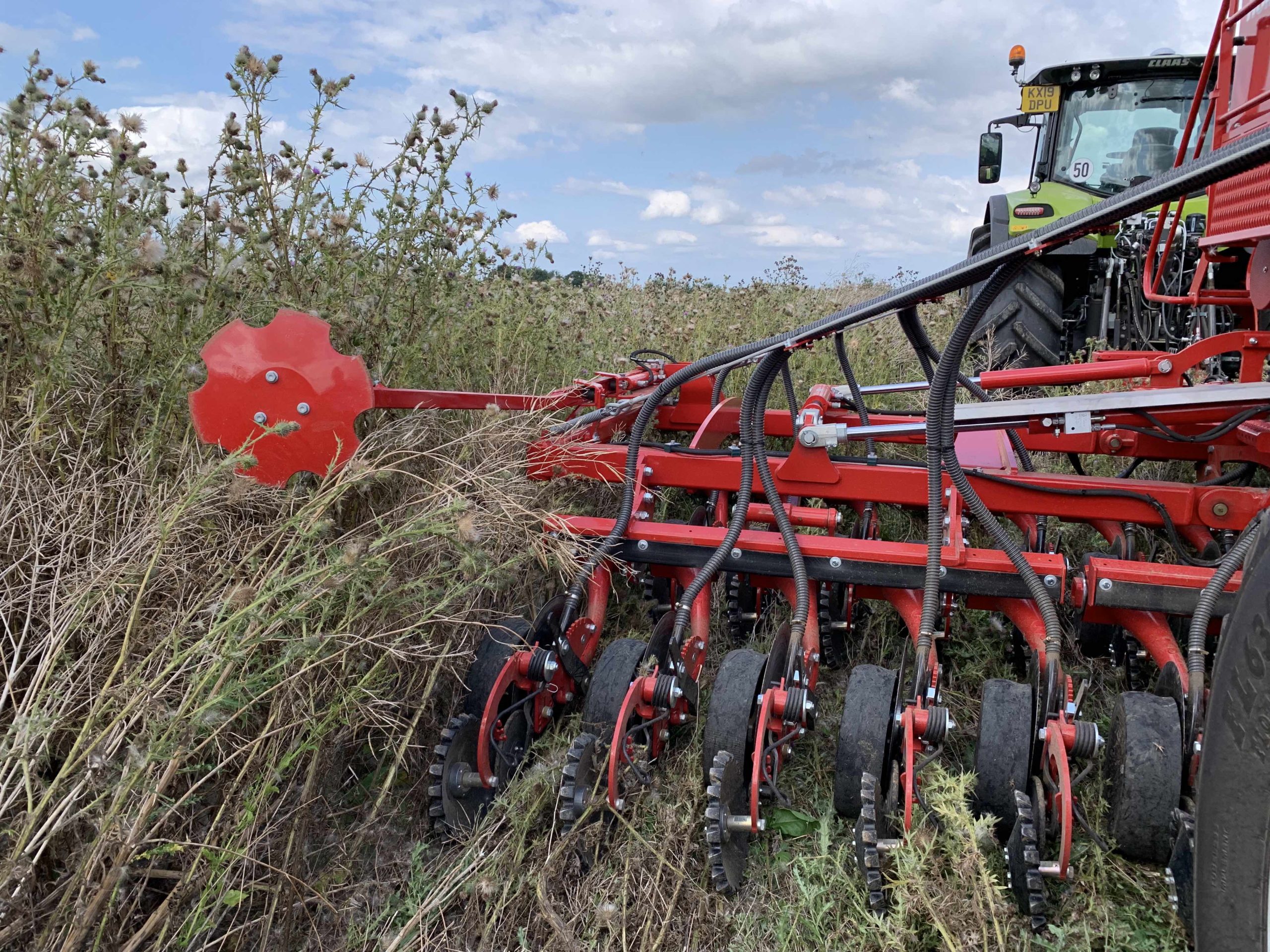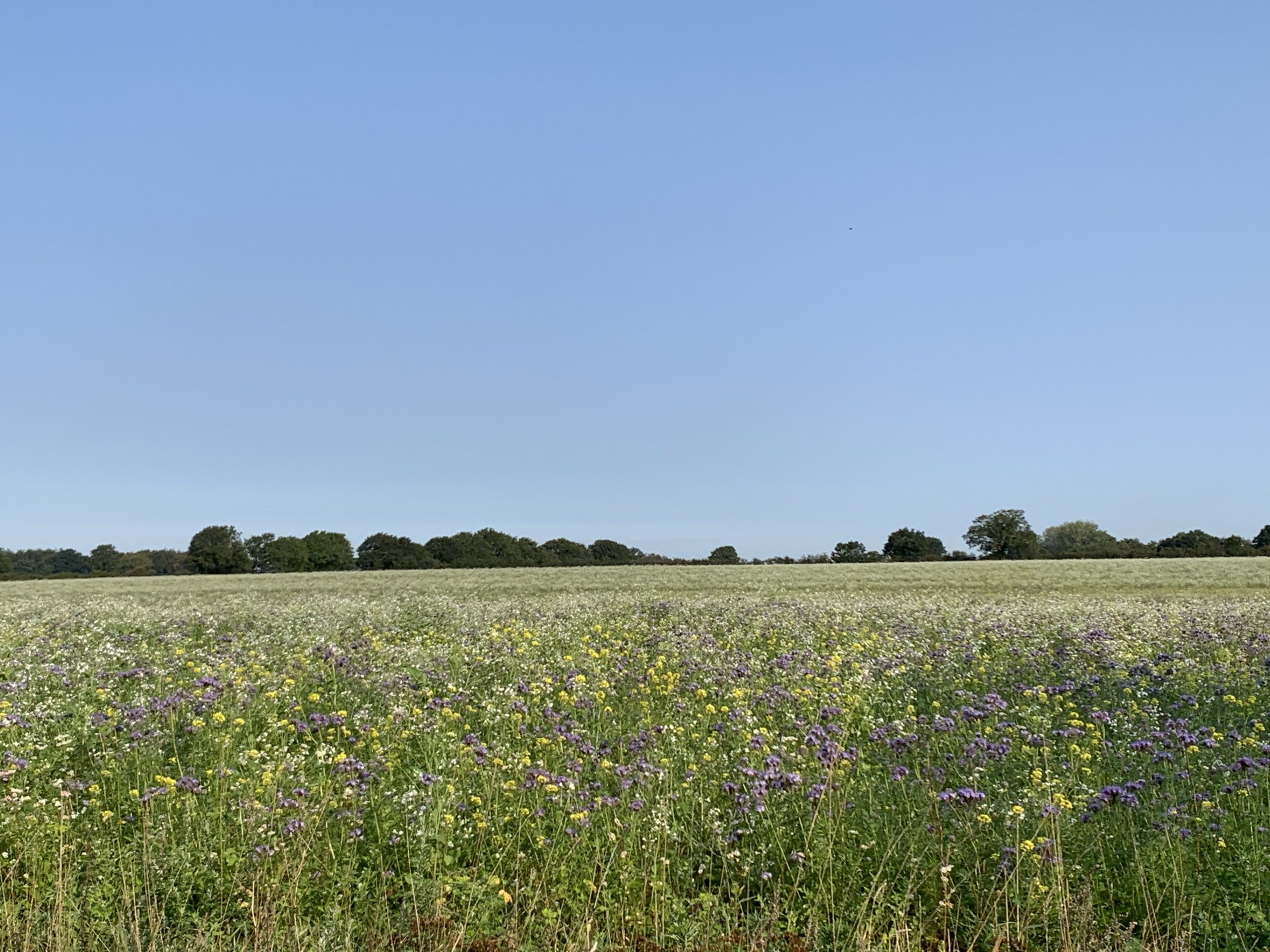ARABLE FARMING
Arable farming is at the heart of all the activities we undertake on the farm and forms the basis, which all our decisions and ideas are based upon.
Over the years we have tried to create a diverse cropping rotation, which puts the soil’s health as the number one priority. We firmly believe in the principal that a healthy soil will produce healthy crops and in turn deliver healthier food. In order to achieve these virtues, we have created some key fundamentals, which we try to follow wherever it is feasible:
Regenerative farming
Put simply, this translates into ‘re-growing our soils’. Over the past few decades modern farming systems have depleted the quality of our soils to a point where they are now totally dependent on artificial inputs in order to successfully grow a high yielding crop.
Adopting a regenerative practice goes about putting the soil’s health first and responding to its needs. Naturally this isn’t a quick fix and so a long-term approach has to be undertaken for the soil to respond.
A diverse cropping rotation needs to be created in order to balance the nutrient availability from the soil to the crop. We have put together a six-year rotation for the heavy land and an eight-year rotation for the light land, which looks like this:
Heavy Land rotation
Year 1: Winter Wheat
Year 2: Oilseed Rape under sown with clovers
Year 3: Winter Wheat
Year 4: Over winter diverse cover crop (up to 10 species) followed by Marrowfat Peas
Year 5: Winter Wheat
Year 6: Companion crop of Buck wheat, Vetch, Clovers and Winter Beans
Light Land rotation
Year 1: Winter Wheat
Year 2: Oilseed Rape under sown with clovers
Year 3: Winter Rye
Year 4: Overwinter cover crop for the livestock to graze followed by Spring Malting Barley
Year 5: Winter Oats
Year 6: Overwinter cover crop for the livestock to graze followed by Spring Malting Barley under sown with a 2yr Diverse Herbal Ley
Year 7: Diverse Herbal Ley
Year 8: Diverse Herbal Ley
In both plans, we have tried to balance a year with a main cash crop (such as Wheat) followed by a full year’s break by using a mixture of cover crops and livestock.
Cover Crops
As mentioned above, the use of cover crops within a regenerative rotation is paramount and they can be used in a multitude of ways. Deciding upon the correct mix of cover crops comes down to their intended use and the field’s fundamental needs.
For example, legumes are fantastic at mopping up any unused nitrogen, which may be lurking in the soil profile. If we don’t mop up this nitrogen it will ultimately leach away and could be lost into a water course, but by using a legume in our cover crop mix, we can hold onto this nitrogen and let it be released into the following Winter Wheat crop.
This serves two purposes, one; we stop the nitrogen leaching away and possibly ending in a water course and two; as the natural nitrogen is released to the Winter Wheat crop, we don’t have to apply as much artificial fertiliser in the Spring when the crop is starting to mature.
Another example of the power of cover crops is the utilisation of Buckwheat. Often the soils can hold onto large quantities of Phosphorous and these too can slowly leach away and possibly end up in a water course. Buckwheat is fantastic at mopping up any unused Phosphorous and then transferring this to a following crop much the same as a Legume can transfer Nitrogen.
These are just two examples of how we can utilise different plants to unlock our soils and enable us to farm in a far more responsible way and ultimately improve the soil’s health and biology.
The next positive relating to cover crops, and possibly the most important, is the fact we can graze our livestock on them over winter. This not only acts as a valuable source of feed but also allows the livestock to slowly apply their muck to the land and thus feeding the soil with the nutrients it requires.
‘Regenerative organic agriculture is really the future.’
6 Principles of soil health...
While every farm is different, there are several basic principles that farmers use to build healthy soil.
Find Out More About...

Carbon (Our Friend)

Farm led Groups



